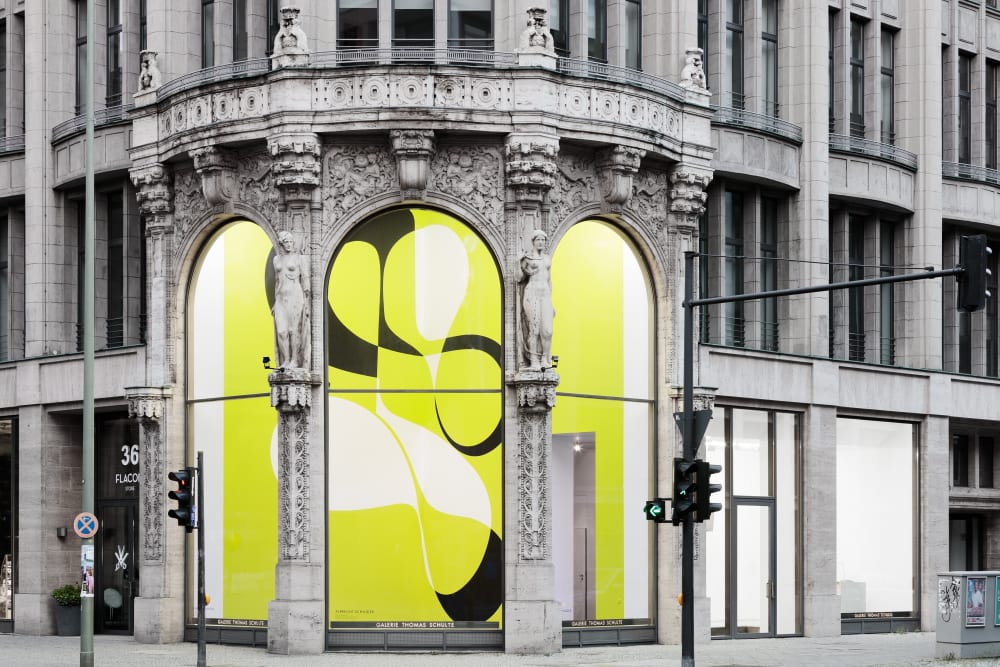TOR: ALBRECHT SCHNIDER
-
Introduction
Friday, 15th of November 2013, Albrecht Schnider reveals his wall drawing, TOR, in the nine-meter high Corner Space of the gallery. With the adaption of a paper-sized, miniature drawing into the architecture of the gallery, Schnider challenges the separation of the pictorial from the surface in a new fashion.
A search: the circling hand of Albrecht Schnider across the paper, until it produces a continuous, solid line that, with its fluid changes wrapping around the white of the paper, resembles the oval form of a head or face. That which seems to be a contour is actually a line, following its own path, and, at the same time, deviating from it; the starting and ending point located within its orbit. The borders distinguish inside and outside, the fore and background.
In adapting his paper-sized, miniature drawing into the architecture of the nine-meter high corner space of Galerie Thomas Schulte, Schnider challenges the separation of the pictorial from the surface. The appreciation of the wall-drawing becomes a physical and spatial experience. When searching the exhibition space for the best possible angle, in which to regard the ever-shifting features of the head, the drawing receives an almost sculptural dimension. The circular, black lines, on the one hand, give the impression of being engraved into the wall, and on the other, seem to spring away from the surface. Even the white content of the oval shape gently stands out from the light grey background. The white expands in two ways: in a light volume, which, in a shell-like manner, bulges into the exhibition space, but also in endless, white depth, rendering the space a sort of stage.
The oversized drawing, placed inside a showcase and in a White-Cube-like situation, enables new ties to be drawn between art and advertising: aesthetic effects, reception, consumption, and modes of presentation. Although these aspects may create additional perceptions and discussions on Schnider’s figurative, graphic works, they primarily lead to the question of a loss of content. By enlarging the graphic form and inserting it into the architecture and its urban surroundings, the very moment of the fleeting content encapsulates the space, in which the observer moves.
Text: Birgit Szepanski -
Installation Views
-
Artists on view
-
Inquire about mire works by Albrecht Schnider


